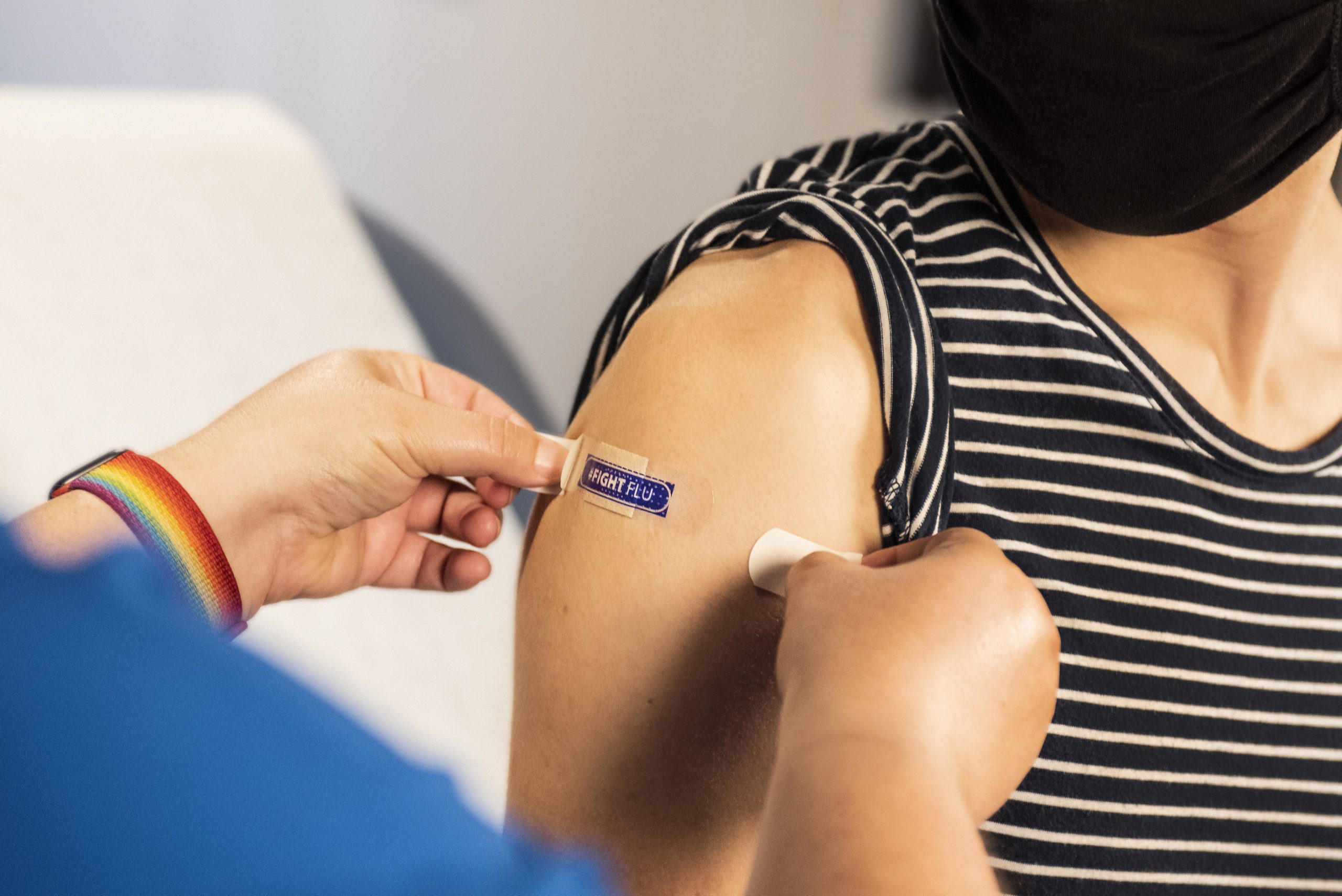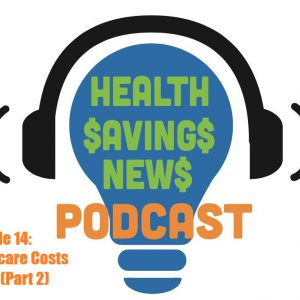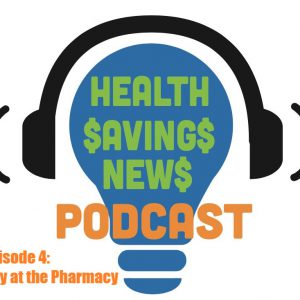Note: This is a rough transcript of episode 22 of Health Savings News and has been lightly edited for clarity.
Evan (00:10):
Hello and welcome to Health Savings News, the podcast about healthcare costs in America and how to save money on the often expensive care all kinds of people need. I’m your host, Evan O’Connor, joined by retired doctors Rich Sagall and Mike Woods. How are you guys doing today?
Rich:
Good, thanks.
Mike (00:25):
Very well, thank you.
Evan (00:27):
Good, good. Each episode we discuss healthcare costs in America offer tips for saving money and relevant news that affects and reflects the expensive landscape of healthcare in America.
This week’s topic is the impending end of the COVID-19 public health emergency as announced by the Biden administration in late January. After the public health emergency was declared in January 2020, the federal government was able to access funds and resources to pay for everything from personal protective equipment such as masks to tests and vaccines. The government could modify Medicare and Medicaid reimbursement policies to increase access to treatments and other resources critical to controlling the spread of COVID-19. When the public health emergency comes to an end in May, it will affect much more than COVID-19 services — Though those resources will become much less acceptable to people who live in rural areas, are uninsured, or limited by strict insurance networks. To start, since we have covered COVID-19 in the past, we’re gonna give a brief update of where we are and how we got here.
Mike (01:27):
Yeah. Much has changed over the last three years since COVID has been among us, but one thing has not changed. According to the World Health Organization on January 30th, 2023, the pandemic is still a big public health problem. As the SARS-COV-2 virus continues to mutate, it’s seeming to stay one or two steps ahead of our efforts to contain it. At this point, it looks like COVID will still be a problem when the current public emergency funds and on May 11th, 2023. So, while most of the podcast will be devoted to the consequences of ending the COVID public health emergency and its funding, let’s take a few moments to review the current status of the pandemic and some of the roadblocks that continue to prolong the pandemic.
Although COVID-19 has slipped into the background of awareness, for most of us, it’s still very active in this country. There are several areas in the United States where residents are currently still at a very high risk for infection. So while less than last year’s peak, COVID-19 is still causing many deaths. Worldwide there have been about 170,000 deaths reported within the last eight weeks. In the United States about 450 deaths per day have occurred over the last week alone. A recent study determined that COVID-19 is the predominant reason that the life expectancy in the United States has dropped over the past three years.
Rich (02:59):
It’s dropped from 79 years in 2019 to just over 76 years In 2021.
Mike (03:05):
The most recent data shows that there were an average of 40,000 new cases per day in the United States over the last week. It’s really impossible to determine the actual prevalence of COVID infections. So this is probably just the tip of the iceberg as far as COVID cases and concerns. Most COVID infections go unreported due to a large number of asymptomatic and mild infections. The fact that a lot of us are using home testing that doesn’t get registered anywhere as a case of COVID. Having said that, there are still numerous reasons why the COVID pandemic has persisted, many of which have been present even shortly after the first COVID infection was diagnosed in January 2020. The current vaccines in infections with previous COVID variants are becoming less effective preventive measures against the newer Omicron variants. The antiviral pre-exposure medication Euvsheld is no longer authorized for emergency use in the United States because it’s now unlikely to be active against the majority of the circulating COVID-19 variants.
Rich (04:18):
Worldwide decline in surveillance and genetic sequencing has made it more difficult to track variants and detect new ones, and subsequently more difficult to create effective vaccines. It’s also becoming more difficult to effectively treat those who develop severe COVID because of concurrent flu and respiratory syncytial virus epidemics, health workers shortages and fatigue due to severity and duration of the pandemic and limited supplies of effective antiviral treatments. Measures to prevent the spread of the coronavirus are being used less often. Many municipalities in states have enacted bans on these preventive measures. The use of facial mask, social distancing, and avoiding travel remains low as people become more accustomed to the pandemic, which is called COVID fatigue, and mandates have mostly disappeared. For those who do travel, testing and vaccination requirements have become more sporadic. Most of those who want to be vaccinated have already been vaccinated, but there remains a significant percentage of the population that have refused or avoided vaccinations.
Mike (05:25):
There are still many factors preventing the general acceptance of proven treatments and protective measures that are being recommended by the CDC. Many people are prevented from seeking these measures due to persisting disinformation, misinformation, and outright myths that are still being put forth by many groups and sources, especially on social media and in conservative news media platforms. Many of the recommended responses to the COVID pandemic were based on scientific principles, that is the best medical information available at that time. Reluctance to accept these scientific principles has made it difficult for others to understand the need for the recommended treatments and measures and make them more likely to ignore the mandates and accept alternative treatments.
Rich (06:14):
I think it’s important to recognize that what’s considered proper treatment in medicine changes with time as we learn more about the various diseases and conditions that we treat. This is normal, and that’s why recommendations change over time. It does not reflect a weakness of the medical system. It reflects the strength.
Mike (06:32):
Yeah. The one example that we would like to give is this, when Dr. Fauci initially did not recommend masks based on the current medical knowledge, but when it became evidence how useful they were they quickly changed their recommendation to the mask mandate.
Evan (06:48):
That was also a supply issue recommendation. They needed the masks to be available to the healthcare workers, who eventually had to go without them when they ran out of their own supplies because of the rush of people going to buy them.
Mike (07:05):
Yeah. Another important problem is, for want of a better word, attitudes. Many still prioritize economic gain and personal freedom over public health. The people that are most affected by these attitudes are people with compromised immunity who have few means to protect themselves from others who might come down with the COVID infection. This perspective prevents them from accepting that although measures to spread COVID may be inconvenient, the consequences of not doing them are significant, and that would be for them as well as many others. The Constitution was not written with pandemics in mind. And while it does guarantee individual freedoms, this shouldn’t take precedence over the obligation of doing what is best for other citizens in the country. The COVID-19 is still a political issue, even after all these years with many lawmakers taking a stance against effective measures in order to appeal to their voters. Many states have now made laws banning masks in vaccine mandate proven means of preventing COVID spread by passing it off as an infringement on individual rights. Other concessions to voters may include promoting unproven remedies. Unequal access to healthcare and vaccination has always been a problem, but it has had a very significant impact on the pandemic as more people are susceptible to the virus based on their location or their ability to access medical care. Finally, there’s a number of documented carriers of the virus that can serve as a source of future outbreaks. This includes cats, dogs, weasels, deer, and other primates. This means it will not be possible to eliminate the virus responsible for COVID. It will always exist in any one or all of these populations. All indications are that COVID is gonna be with us for a long time, if not forever.
Rich (09:09):
There’s been a lot of talk about COVID vaccinations becoming an annual event, just like flu shots or an annual event. It will not prevent all the episodes of the disease, but it should lessen the severity of it.
Evan (09:24):
The only thing that’s different between COVID and the flu is flu has a season. COVID doesn’t. The likelihood is that people should probably get vaccinated more than once per year, but there’s no agreement in that with the people who have the power to make those decisions.
Rich (09:40):
Well, I think we’re still learning a lot about the persistence of immunization. I just recently listened to a report on a study that looked at people who were unvaccinated, got COVID, and when they should be vaccinated after they recover from their illness. The study had gone for 400 days and they found the longer they waited to vaccinate somebody, the greater their immune response. So we’re still learning a lot about the immunity of this disease.
Mike (10:06):
Yeah. Again, to emphasize the scientific method that helps us make these decision. But unfortunately, a lot of times with COVID, we don’t really have data to support any of these decisions, and some of them really have to be made just on the expertise of the people making them. We think that it may be too soon to end the COVID public emergency and the financial benefits, and Evan will be going over some of the significant events that may take place after this financial benefit ends.
Evan (10:39):
With the end of the public health emergency planned for May 11th, many changes are expected to happen either by then or starting then. COVID vaccines and boosters will start to cost over $100 for uninsured or for insured people who get them outside of their network. So if you go to a Walgreens and only the CVS is in your network, you’ll end up paying over a hundred dollars. [Shortly after recording this episode, Moderna announced they would stop their plans to charge $110-130 for their vaccine. Pfizer vaccines, including the bivalent booster, are still expected to cost over $100 per dose.]
Currently, private insurance and Medicare reimburses members for the cost of up to eight rapid at-home tests per month. After the public health emergency ends, private insurance will no longer be mandated to cover COVID tests and Medicare patients will have to start paying a portion of them. Medicaid will cover tests ordered to buy a doctor, but rapid at-home tests will begin to vary state by state.
COVID treatments will be most reliably accessible to patients with private insurance accessing care in-network. Medicare Part D will cover doses until the federal supply is depleted before patients will have to pay a portion; there is no available date when that could occur. Medicaid will only reimburse treatments that are FDA approved. Whether medications that are under emergency use authorization from the FDA will vary state by state.
Most Medicare coverage of telehealth services that were expanded and allowed during the pandemic will end following the end of the public health emergency. The only exceptions are permanent changes for beneficiaries seeking mental health and substance abuse help. For Medicaid recipients services and coverage will vary state by state.
Probably the most devastating of the changes to expect is that up to 15 million Americans will lose Medicaid coverage — that’s 16% of those currently covered by Medicaid — after state programs lose provisional funding and expanded eligibility from the public health emergency, including over 6 million children. Most of the people expected to be impacted are Black, indigenous, and other people of color, inevitably worsening health inequities of vulnerable populations. Congress has passed legislation that allows states to begin cutting Medicaid coverage in April to make the process of taking away poverty-stricken patients, access to healthcare more “orderly.”
White House Coronavirus response coordinator, Ashish Jha, has publicly expressed concern that “we are going to have for years our healthcare system being pretty dysfunctional,” contributing to deferred care and long wait times across the system “because we’re going to be so overwhelmed with respiratory viruses.”
The Biden administration has stressed that they intend to coordinate some kind of targeted intervention for people without insurance. But no concrete plan has been shared at the time of this recording, and targeted programs have a long established history of being insufficient and excluding the very people they’re intended for. This means some uninsured people will likely be charged out of pocket for COVID vaccines and treatments, which means they will be less likely to succeed in accessing them or seek them out in the first place.
When the public health emergency ends, fewer people will get vaccinated and boosted, and fewer people will get treatments when they are ill. More people will get sicker and not be able to access care. More people will get Long COVID and not be able to afford care, and more people will die.
Even with the governmental failures from the beginning of the pandemic to now. If there is one thing that will inevitably do a worse job of equitably providing affordable care, it’s the existing healthcare system in the United States. The entire protocol to advocating for accessible COVID care will change. It will stop being federal, state, and local governments patients have to appeal to. Instead, it will be the government plus every one of the nearly 6,000 private insurance companies in the United States, Medicaid programs for each of the 50 states pharmaceutical companies, the FDA, the court’s, Walgreens, CVS, healthcare providers, hospitals, pharmacy benefit managers. The list goes on, because that is how our existing healthcare system distributes responsibility for everything else.
The uninsured rate fell to historic low in 2022, but 15 million people losing healthcare coverage will undo all of that progress. And 23% of working-age adults are still underinsured, where they’re insured but the coverage doesn’t provide affordable access to adequate healthcare. Echoes of debate of “acceptable loss” will become louder as advocates of “returning to normal” place their experience of perceived inconvenience over the very real public health and safety concerns that affect the lives of chronically ill, disabled, and elderly people. As they’ve said, the last time life expectancy was 76 years old was over 20 years ago, but getting that back to normal isn’t the priority. The notion of returning to normal is reserved for abolishing mask mandates, vaccine requirements, and limits on workplace and venue capacity.
[segment break]
Evan (15:52):
The last segment of each episode, we suggest some of the culture, art, entertainment, and social causes we’ve been engaged with to each other and our listeners. As we’ve discussed, this is what we’re engaged with right now. We don’t have to just allow the government to pass this off to the existing healthcare system. We can call our representatives, we can protest, we can try to avoid this perpetual COVID crisis and the abandonment of vulnerable people. The only power we really have is to say that this isn’t acceptable to us and hope that somebody listens. You can contact your representatives by calling the U.S. Capitol Switchboard at 202-224-3121. From there, you can be connected to your elected Congressional representative or senator’s office. You can find information for your local or state elected officials by searching online. Organize a protest and demand Congress pass some form of Medicare for All for COVID, which is what we’ve had for the past three years. Encourage your representatives to expand Medicare for All to cover things other than just COVID it. And at the very least, get involved with a mutual aid group and try to support the people who will be needing our support as the public health emergency comes to an end far too soon.
Thank you so much for joining us for this episode of Health Savings News. Please subscribe, rate, and review us on Apple Podcast or wherever you’re listening to the show — it really does help. You can follow @NeedyMeds on Facebook, Instagram, LinkedIn, YouTube, Mastodon, and you can follow @HealthSavingPod on Twitter (for as long as Twitter remains around) for updates specific to this podcast and send questions, comments, and topic suggestions to podcast@needymeds.org. Our music is composed by Samuel Rulon Miller. His music can be found at musicisadirtyword.bandcamp.com. The Health Savings News podcast is produced by me, Evan O’Connor. All the sources we use in our research can be found in this episode’s podcast description on our website or your podcast of choice. Health Savings News is not intended to substitute professional medical, financial, or legal advice. Always seek the advice of a qualified healthcare professional or appropriate professional with any questions. Views expressed on Health Savings News are solely those of the individual expressing them. Any views expressed do not necessarily represent the views of Health Savings News, other contributors, the NeedyMeds organization or staff. Thanks again for listening. We’ll see you in two weeks with our next episode.
Sources:
https://www.nejm.org/doi/full/10.1056/NEJMp2213920
https://www.cdc.gov/coronavirus/2019-ncov/COVID-data/COVIDview/index.html
https://time.com/6251520/COVID-19-public-health-emergency-ends-what-changes/
https://www.verywellhealth.com/how-much-will-moderna-covid-vaccines-cost-7097022
https://www.washingtonpost.com/health/2023/01/12/COVID-winter-surge/
https://inthesetimes.com/article/targeted-universal-means-tested-child-tax-credit-biden-democrats
https://www.teenvogue.com/story/COVID-vaccines-death-panel-oped
https://www.washingtonpost.com/health/2022/11/28/COVID-who-is-dying/





